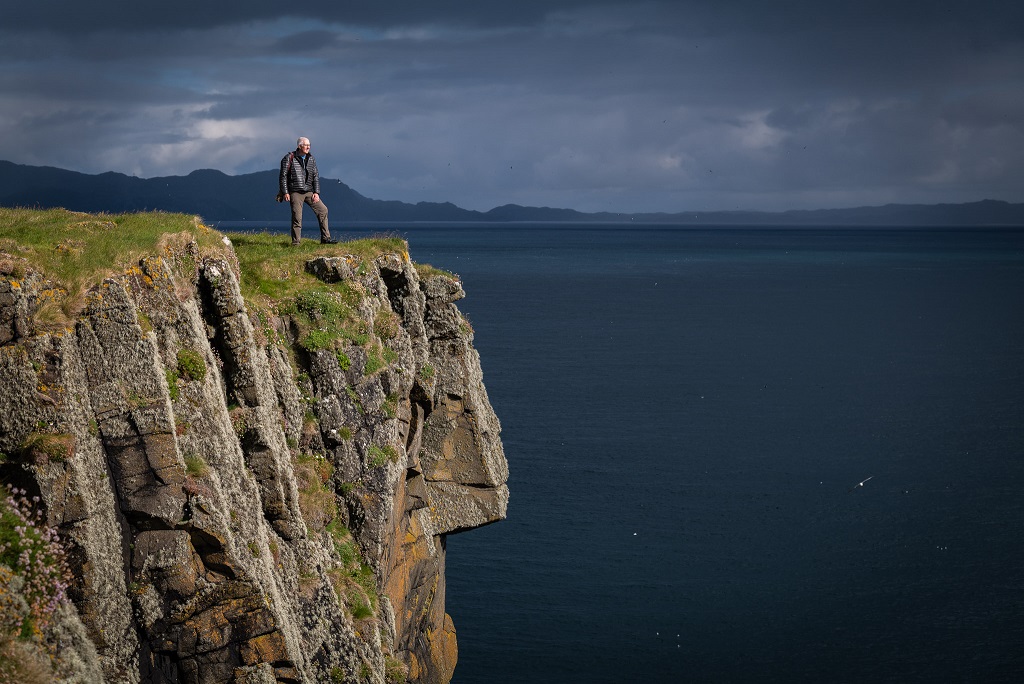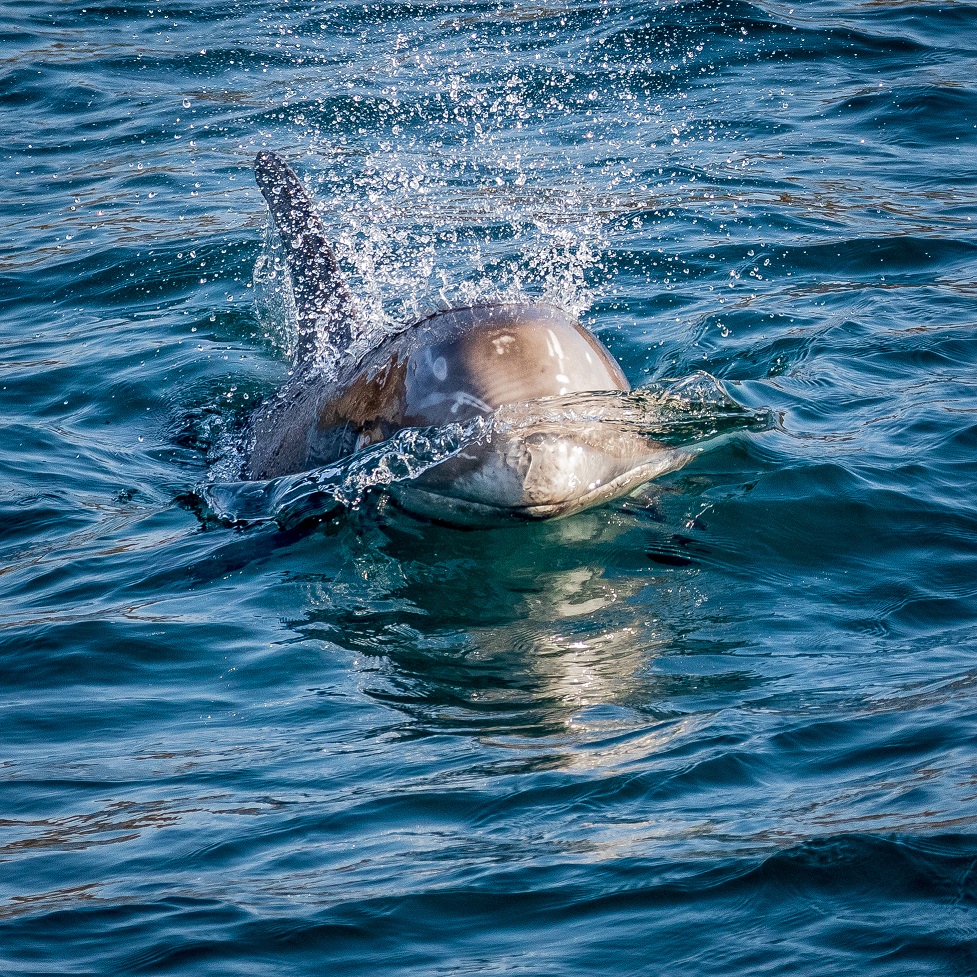
How to spot Scotland’s winter wildlife
Paul Sharman, business development manager at Hebridean Adventures, and binocular maker Swarovski offer tips for spotting winter wildlife in Scotland.
1. Be in the right place at the right time for the best chance of success
There are some very seasonal highlights as well as localised species to target in Scotland, and a little forward planning and research will pay dividends if you are hoping to try and seek out something in particular. One personal favourite would be the opportunity to look for the beautiful mountain hares and ptarmigan high up on the hills and mountains in their white winter coats, and another is the chance to spot the enigmatic red squirrels, which have their stronghold here in the north. Use online resources such as the RSPB, Scottish Wildlife Trust and Saving Scotland’s Red Squirrels websites to find good locations and times of year to visit.
2. Plan your visit accordingly to maximise your time
Wildlife watching takes many forms. Some of us love to spend whole days or weeks carefully exploring a certain area known for perhaps some specific species, while other wildlife lovers may only have a very limited time to visit and really want to be able to tick off a special species they have longed to see before having to return home. Luckily, the variety of Scotland’s magnificent landscapes and habitats, plus the special services offered by experienced wildlife guides and specialised hides, can offer everyone their own unique experience. If you are the itinerant type then you can’t go wrong with a magnificent location such as the Cairngorms National Park, thanks to its combination of ancient Caledonian pine forest, mountain plateaus and freshwater rivers and lochs. If you are very short on time and Scottish specialities like red squirrels and crested tits are what you are desperate to see – and perhaps photograph – then there are several excellent commercial wildlife hides that will probably give you the best chance of achieving your dream encounter. Of course, you could also visit a well-known public wildlife feeding area like the one at the RSPB’s Loch Garten visitor centre too, which almost always has squirrels and crested tits around, but you will also be sharing the experience with lots of other people so you need to add that to the equation too. Remember to take some birdseed or peanuts in your pocket as many of the birds will fly to your hand in the winter if you stay still.

3. Be comfortable and have what you need to enjoy your day in Scotland
It sounds simple doesn’t it, but I’m as guilty as anyone of dashing out the door, eager to get to where I’m going and then wishing I’d packed a drink/warm hat/spare camera battery/etc with me. Try and get organised the night before at the very least – check the weather forecast, think in terms of clothing layers that are easy to add or take off if you are hot or cold – Scotland is famous for its changeable weather. Have a waterproof and windproof layer with you, some food and drink, and of course, make sure you have some quality binoculars safely stowed away. Swarovski Optik has a great range called the CL series of compact quality binoculars that easily fit in a backpack or large pocket and do an amazing job even in very low light. If you are heading up into the high mountains in particular, then please take the appropriate level of care in your preparation. The mountains in winter can be extremely cold, treacherous and the weather extremes can easily fool the unwary. Maybe use a mountain guide if you are a serious adventurer, or for a quick visit try driving up to the funicular railway base-station area on Cairn Gorm mountain outside Aviemore. It is popular most days and there is more safety with others around you but still go prepared. Snow buntings are often seen around the car park area.
4. Scotland is perfect for an organised wildlife break
More so than anywhere else in Britain, there are a wealth of wildlife tour operators, wildlife-oriented hotels and professional guides ready and waiting to welcome you and guide you on some amazing nature experiences in Scotland. They will all have their own areas of expertise, with some focusing on a few specific species and locations, and others who will be able to show you a wide range of habitats, animals, birds and flora. This can just be for a few hours, a day trip or for longer as you desire – check their reviews for an idea of what to expect and call them to ask questions if you need to. Cruising and wildlife watching is much more prevalent in Scotland in particular but is an April-to-October season mainly, with the west coast and the islands the main hub of activity for the best chances of seeing a variety of cetacean species, as well as the magnificent white-tailed eagle, a myriad of seabirds from puffins to gannets, but also other favourites like seals and otters. Hebridean Adventures, for example, will also give you the chance to go ashore in remote areas so you also have the chance to spot land-based species too like red deer, golden eagles, butterflies and perhaps fascinating local plants like Northern marsh orchids, sundews and butterworts. In winter all is not lost though – try shore-watching from cliff-top vantage points – you never know what you might see. Check the Hebridean Whale Trail for suggestions along Scotland’s west coast and islands.

5. The closer you look, the more you see
My final tip for wildlife spotting in Scotland was brought home to me just this past weekend. I was up in the local hills walking in a pine forest that had a rich ground covering of shrubs, heather, grasses, mosses and lichens, as well as many unusual fungi species, which is what I was searching for to photograph. The closer I looked at this the more and more species I could see, it was amazing. Then I started to notice the rustling and scurrying of voles and shrews when I stopped and stayed quiet for a while, and of course a wide variety of insects, both flying and ground-based such as beetles, caterpillars and the like. Sometimes it is easy to get too focused on trying to spot the larger, and dare I say it, more glamorous species, when at your feet there may be dozens or even hundreds of different flora and fauna species that are just as fascinating in their own way but often totally overlooked and can make an average day for spotting big wildlife turn into a wonderfully enjoyable one.
Read more stories on Scottish Field’s wildlife pages.
TAGS

